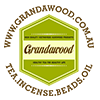Menu
-
-
F.A.Q
- How to identify genuine agarwood chip, natural or cultivated
- How to identify oil injection / absorption fake agarwood beads
- How to know if there are more than one oil in your oil
- How to make your wood bracelet or mala darker
- How to tell if an Agarwood bead sinks WITHOUT sinking it under water?
- How does back flow incense work and how do you burn it?
- Where to start if you don't know what agarwood is ?
- Why are you losing money if you buy seeds and plants?
- Which agarwood incense should I choose?
- Frequently Asked Questions
- Agarwood Related Articles
- Shipping
-
SHOP - Agarwood
-
SHOP - Other Fragrant Wood
-
SHOP - Incense Holder and Burner
-
- FREE Oud Oil guide
- Testimonials
- "Why did you buy this?"
- Contact us
- About Us
- +61430284329
- Login
-
English

Cultivated and Wild Agarwood, a personal comparision
September 23, 2015 4 min read
|
|
Cultivated Agarwood |
Wild Agarwood |
|
Method of creation and collection |
Drill, Cut, nail with special agarwood agent (yeast or chemical which both would be washed away by rain and decomposed naturally). This method varies depending on the technique of growers hence the quality of resin and the period of creation also varies. Easy to collect direct from plantation site
|
Insects, thunder bolt, fungi. Collected by agarwood hunters. Unstable as these species now are protected and prohibited to collect by government in an attempt to save them. It is risky for hunters for facing robbery sometimes. Several reports that the whole groups had been killed for ransom when they found these valuable trees.
|
|
Quality |
This is a debatable area
Ensar Oud (ensaroud.com) is an Oud artisan with advanced distill technique which can equalise or even surpass the Wild Oud in term of Oud quality.
The Agarwood oil is distilled from Agarwood chips . The more oil the better. This again depends on the age of infection Early infection
Before going on please look at the below image from gaharujnkou agarwood grower:
(image: https://gaharujinkou.wordpress.com/) This is a seven years of infection, almost all of the whitewood are infected, turn into immaculately beautiful agarwood If this wood is used to make incense or distilled with the right technique, there is no doubt of its quality would surpass the wild one.
|
Depend on the age of infection The below pictures are natural agarwood log
Natural wood log with more age of infection
The more resin, the better the quality, the higher the price. Please note, if the tree was collect prematurely , in terms of agarwood quality it would be a waste of time and resource, damaging the environment. There is one thing currently technology was not able to do: the formation of Kyara or Ki nam (it takes century)
For one who is interested in Kyara vs agarwood please check here
|
|
Safety |
If you do an online search, there are many claims suggested it was unsafe to consume cultivated agarwood due to the use of chemical. It might be true but please consider:
|
Generally it is safe to consume. However, for its ever rising price, people have been tried to deceive others by adding other substances and spice, even iron nail to increase agarwood weight. Psychologically, to burn the wild wood chip one would feel like burning money (incense grade is around $10,000 USD to $55,000 USD per kg, some over $200,000 per kg)
|
|
Supply and price |
Supply: With hundreds of plantation site, there are plenty of suppliers. Reasonable, negotiable depends on quality and quantity. To grow the trees strong enough NOT to die before inoculated: 7 years Time to harvest after inoculation: 2 to 3 years usually |
Rarer and rarer to almost extinct. Price is more and more expensive.
|
| Agarwood beads |
Again, it totally depends on the infected wood which would come back to the age of infection plus the growing method. A single bracelet or 108-mala beads would emit a light fragrance at room temperature. Agarwood beads are mainly for keep-sake, or lucky charm. Suitable for entry level. The wood pattern is usually consistant
Clearly, you could observe black (agarwood) and white spot in the log which used to make agarwood beads as below:
Please note that not all cultivated beads will have this pattern. With the development of agarwood farming technology, the pattern will start looking similar to wild one. Be low is cultivated 108 mala beads contain honey sweet scent, a hint of spice.
|
Unique, usually available in small quantity as each wild agarwood log is different. The wood pattern is different as the infected area is random and distinct in different tree Suitable for collectors
|
| Appearance in Woodchips | Please see below |
Agarwood chip a

Agarwood chip b

From the above wood chips (raw photo without any editing), by looking directly with our very own eyes, they are identical to me. Unless someone with years of experiences, often is not able to tell. Even if burn it, the complexity in scent could be very similar. So would you still be interested in wild agarwood chip? Please note the price difference is in extreme (from triple to 10 folds or more). Certainly for collectors it is worth it but for daily enjoyment, this price will hurt your bank. Food for thoughts?
For your own interest
Wood chip a is Wild from Nha Trang Vietnam
Wood chip b is Cultivated from our plantation site
Once Agarwood farming technique is advanced, a closer step from cultivated to wild, quality and quantity wise
Leave a comment
Comments will be approved before showing up.
Also in News

What is Tasbih? The Deep Meaning of Subhan Allah and the Role of Prayer Beads
November 09, 2025 4 min read





 '
'





